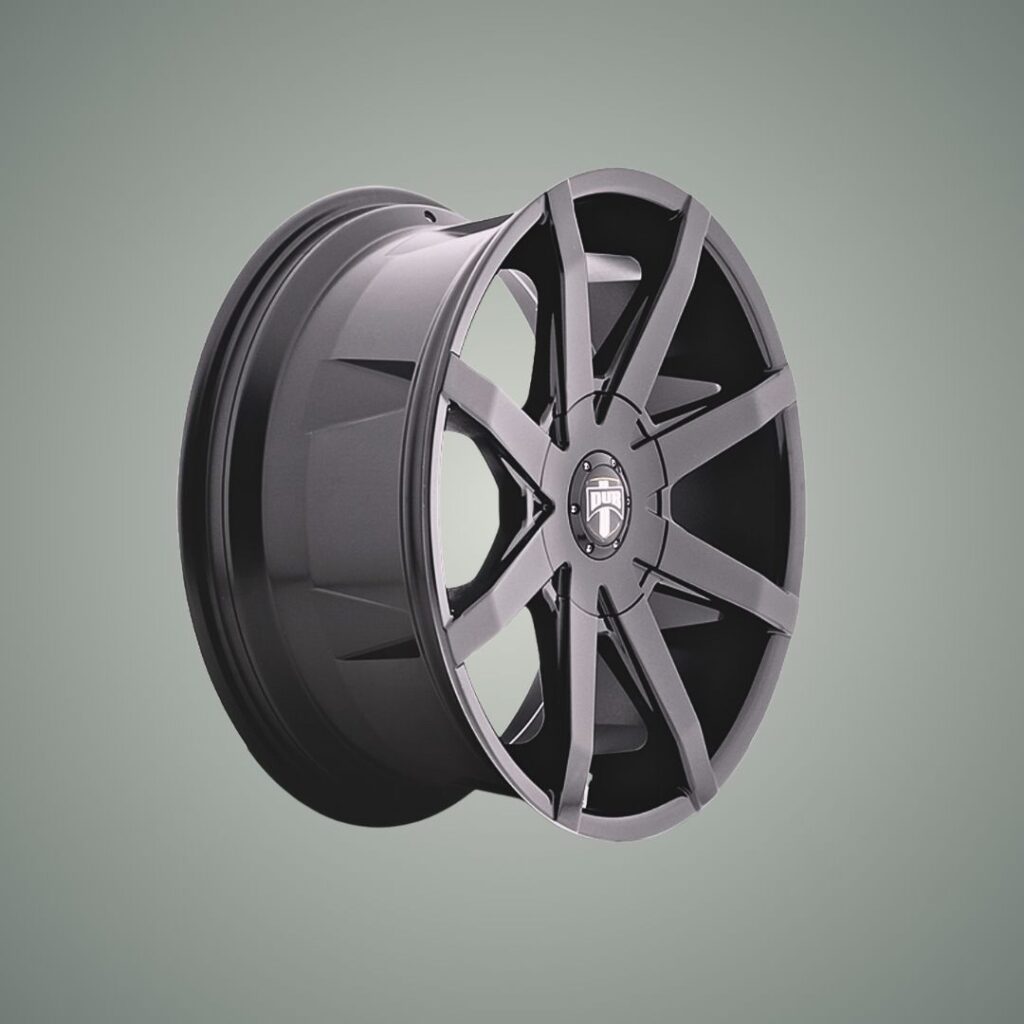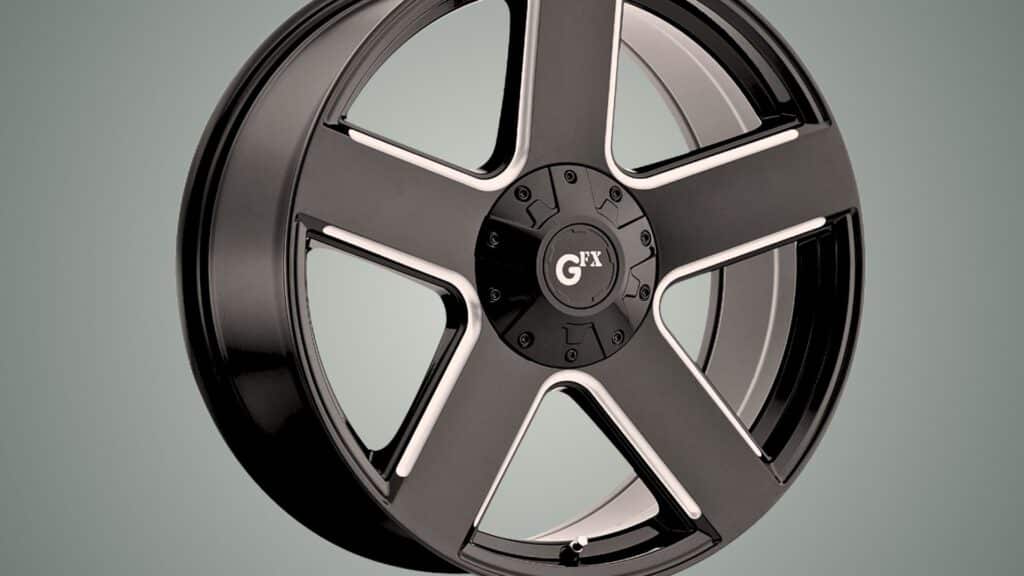Are you trying to figure out if those wheels will fit your vehicle?
The 6×132 bolt pattern might initially seem confusing, but it’s simple to understand.
This measurement tells you two key things: your wheel has six lug holes spaced in a circle with a 132mm diameter.
I’ve spent 15 years working on vehicles and helping folks match the right wheels to their cars.
In this guide, I’ll break down everything you need to know about the 6×132 bolt pattern, including:
- How to measure it correctly
- Which vehicles use this pattern
- Tips for wheel shopping
You’ll learn exactly what measurements to look for when buying new wheels, helping you avoid costly mistakes.
I’ll use real examples to ensure you understand every step.
Let’s get started with the basics.
Understanding the 6×132 Bolt Pattern & Its Measurements

Let me break this down in simple terms.
When you see “6×132,” it means two things: your wheel needs six lug nuts, and these lugs form a circle that’s 132 millimeters across.
Why does this matter?
If your measurements are off by a few millimeters, your new wheels won’t fit.
Many people waste money on wheels that are wrong-sized because they didn’t measure correctly.
Here’s how you can measure your bolt pattern at home:
- For the first number (6), Count the lug holes on your wheel
- For the second number (132), Measure from the center of one lug hole to the center of the hole directly across from it
Tools you’ll need:
- Measuring tape
- Ruler
- Caliper (most accurate)
Pro tip: Don’t measure from the edges of the holes – this will give you the wrong numbers.
Always measure from the centers.
What are the Factors to Consider When Selecting Wheels with a 6×132 Bolt Pattern?
Finding wheels that fit isn’t just about matching the bolt pattern.
I’ve helped hundreds of car owners pick the right wheels, and here are the key things you need to check.
Vehicle specs
- Look up your car’s year, make, and model
- Get the factory wheel specifications
- Write these numbers down for reference
Materials matter for durability
- Steel wheels: tough and cheap but heavy
- Aluminum wheels: lighter and good-looking
- Cast wheels: solid value for daily driving
- Forged wheels: strongest but cost more
Size and fit measurements
Your wheel needs three perfect matches to work well:
- Wheel offset: This tells you how your wheel sits in the wheel well
- Too much: The wheel sits too far in
- Too little: wheel sticks out too far
- Wheel diameter: Check your tire size for this number
- Bigger isn’t always better
- Staying close to stock size is often best
- Wheel width: This affects how your tires fit
- Must match your tire width
- Check your manual for the right range
Even if the bolt pattern matches, getting these other measurements wrong can cause, so watch out for these:
- Rubbing against your car
- Poor handling
- Uneven tire wear
- Safety issues
Take your time with these measurements.
I suggest talking to a wheel specialist before buying if you’re unsure.
It’s better to double-check than waste money on wheels that don’t fit right.
How to Install Wheels with a 6×132 Bolt Pattern
Let me walk you through the steps I use when installing wheels.
Safety comes first, so take your time with each step.
Before You Start:
- Park on flat ground
- Use wheel chocks
- Get your torque wrench ready
- Clean your tools and work area
Step 1: Lift and Secure Your Vehicle
- Put the parking brake on
- Place jack stands correctly
- Lift one corner at a time
- Make sure the car is stable
Step 2: Remove Old Wheels
- Loosen lug nuts while the wheel is on the ground
- Lift the vehicle with a jack
- Take off lug nuts
- Remove wheel carefully
Step 3: Prepare for the New Wheel
- Clean the hub surface
- Check for damage
- Remove any rust
- Apply anti-seize to studs (but not threads)
Step 4: Install New Wheel
- Line up the wheel with hub holes
- Put the wheel on by hand
- Start all lug nuts by hand
- Turn each nut until snug
Step 5: Torque Pattern
- Lower the car until the wheels touch the ground
- Use a star pattern for tightening
- Check your manual for torque specs
- Tighten in three steps:
- Step 1: 30% of final torque
- Step 2: 60% of final torque
- Step 3: 100% of final torque
Final Checks:
- Double-check all lug nuts
- Look for any wobble
- Test drive at low speed
- Recheck torque after 50 miles
Pro tip: Mark your lug nuts with a paint dot after torquing.
This helps you spot any that come loose.
Common Mistakes to Avoid During Installation
After fixing countless wheel installation problems, I’ve seen the same mistakes pop up often.
Let me help you avoid these common issues.
Wrong Alignment Problems
- Don’t force the wheel onto the hub
- Stop if you feel unusual resistance
- Check for debris in bolt holes
- Make sure the wheel sits flat against the hub
Lug Nut Troubles
Using the wrong force can cause big problems:
Too loose:
- Wheels might wobble
- Studs can break
- You could lose a wheel while driving
Too tight:
- Studs can stretch or snap
- Brake rotors might warp
- Lug nuts could break
Tool and Part Mistakes
I see these errors all the time:
- Using impact wrenches instead of torque wrenches
- Picking the wrong size sockets
- Mixing different types of lug nuts
- Skipping the torque specs
Safety Checks
Before You Drive:
- Wiggle each wheel by hand
- Listen for odd sounds
- Look for uneven gaps
- Feel for any wobble
A quick tip: Keep a set of the right tools in your car.
You don’t want to be stuck with a flat tire and the wrong socket size.
Applications of the 6×132 Bolt Pattern in Different Vehicles
I’ve noticed this bolt pattern in specific makes and models in my years working with different vehicles.
Let me share what I know about where you’ll find it.
Common Vehicles Using This Pattern
- Can-Am ATVs and UTVs
- Bombardier off-road vehicles
- Select European light trucks
- Several utility vehicle models
Vehicle Types and Uses
You’ll mostly find the 6×132 pattern in:
Off-Road Vehicles:
- Sport UTVs
- Work UTVs
- All-terrain vehicles
- Recreational vehicles
Light Work Vehicles:
- Small farming equipment
- Maintenance carts
- Light utility trucks
- Compact work vehicles
Why This Pattern Works Well
The 6×132 setup offers good benefits for these vehicles:
- Spreads weight evenly
- It handles rough terrain better
- Fits compact wheel designs
- Works well for smaller vehicles
Real-World Examples
I’ve worked with many Can-Am models using this pattern:
- Commander series
- Defender lineup
- Maverick models
- Outlander ATVs
Benefits of the 6×132 Bolt Pattern
Based on my hands-on work with various vehicles, let me share what makes this bolt pattern special.
Strong and Stable Design
The six-bolt setup gives you:
- Better weight spread across the wheel
- Less stress on each lug nut
- Stronger hold during rough rides
- Good balance on uneven ground
Wheel Options
I’ve helped many riders find wheels, and this pattern offers good choices:
- Many styles available
- Different price points
- Various finishes
- There are multiple sizes to pick from
Built for Tough Use
This pattern shines when things get rough:
- Handles bumpy trails well
- Works for heavy loads
- Stays tight during hard turns
- Keeps steady on hills
Daily Benefits
You’ll notice these perks in regular use:
- Less wear on lug nuts
- Fewer wheel checks needed
- Good tire life
- Smooth rides
Performance Plus
When you push your vehicle hard, you’ll feel the difference:
- Better control in the mud
- Solid grip on rocks
- Good stability at speed
- Less wobble on rough roads
List of Vehicles Using 6×132 Bolt Pattern
Based on my work in the field, here’s a clear list of vehicles that use this bolt pattern.
I’ve organized them by brand and type to make your search easier.
Can-Am ATVs and UTVs
| Model | Years | Type |
|---|---|---|
| Defender HD8 | 2016-2023 | Utility UTV |
| Defender HD10 | 2016-2023 | Utility UTV |
| Commander 800R | 2011-2023 | Sport UTV |
| Commander 1000R | 2011-2023 | Sport UTV |
| Maverick Trail | 2018-2023 | Sport UTV |
| Maverick Sport | 2019-2023 | Sport UTV |
| Outlander 500 | 2013-2023 | Sport ATV |
| Outlander 650 | 2013-2023 | Sport ATV |
| Renegade 570 | 2016-2023 | Sport ATV |
| Renegade 850 | 2016-2023 | Sport ATV |
Bombardier Off-Road
| Model | Years | Type |
|---|---|---|
| Traxter HD8 | 2018-2023 | Utility Vehicle |
| Quest 500 | 2002-2004 | ATV |
| Quest 650 | 2002-2004 | ATV |
| DS650 | 2000-2007 | Sport ATV |
Note: Always check your owner’s manual to confirm your specific model’s bolt pattern.
Some trim levels might use different patterns.
Conclusion
Getting your wheel’s bolt pattern right isn’t just about making things fit – it’s about keeping you safe on the road.
The 6×132 pattern works great for many vehicles, but only when matched and installed correctly.
Talk to a wheel specialist if you’re not 100% sure about any step in the process.
They can double-check your measurements and ensure you get exactly what you need.
Keep this guide handy when you’re shopping for wheels.
Remember: take your time with measurements, follow the torque specs, and always do those safety checks.
Your vehicle deserves that extra care, and so do you.
Need help?
Most wheel shops offer free pattern checks. It’s better to ask than guess.
Frequently Asked Questions
Can I Use Wheels With a Different Bolt Pattern?
No, mismatched bolt patterns can lead to improper fitting, unsafe driving, and potential vehicle damage.
What Tools Are Needed to Install Wheels With This Pattern?
Essential tools include a lug wrench, a torque wrench, and a jack for secure installation.
How Do I Measure a 6×132 Bolt Pattern?
To measure, check the distance between opposite lug centers or use a bolt pattern gauge for accuracy.


